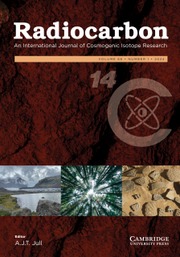Article contents
Reconstruction of Prehistoric and Medieval Dietary Patterns in the Russian Far East: A Review of Current Data
Published online by Cambridge University Press: 23 February 2016
Abstract
An overview of current knowledge on the human paleodiet of the southern Russian Far East is presented. The earliest data are available for the Neolithic complexes of Primorye Province, dated to ~7000–5800 BP. For 10 humans from the coastal site of Boisman 2, a heavy reliance on marine fish and mammals (~70–80% of the total diet) has been established; this is similar to the Jomon and Chulmun complexes of Hokkaido Island and Korea. For two individuals from the inland site of Chertovy Vorota, a mixture of terrestrial and riverine (including anadromous species such as salmon, ~25% of the total diet) food resources is evident. In the Amur River basin, the diet of the Paleometal (i.e. Bronze/Early Iron Ages) population (dated to ~2500–1800 BP) was probably based on a mixture of C4 plants (millet, ~50–60% of the total diet), C3 plants, and terrestrial animals, while in the Middle Ages (~1500–300 BP) the contribution of C4 food was lower at ~20–25%. On Sakhalin Island, the maritime-oriented economy existed for a long time, at least since the Late Neolithic/Paleometal Age (dated to ~2500–1800 BP) and until the ethnographic time period (from the 17th–18th centuries AD onwards). Up to ~80–90% of the diet consisted of marine mammals and fish, and this is in accord with dietary patterns of the Epi-Jomon and Okhotsk cultural complexes on Hokkaido Island. Information on the paleodiet of the coastal populations of the Japan and Okhotsk Seas should be taken into account when calibration of 14C dates run on human bones from these regions is undertaken, because the predominant consumption of marine food caused a distortion of the true 14C age.
Information
- Type
- Articles
- Information
- Copyright
- Copyright © 2015 by the Arizona Board of Regents on behalf of the University of Arizona
References
REFERENCES
- 6
- Cited by

